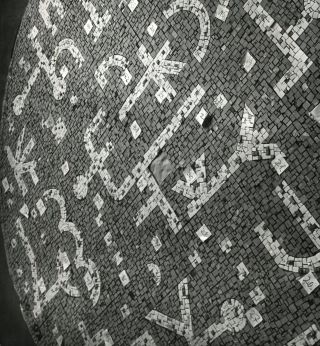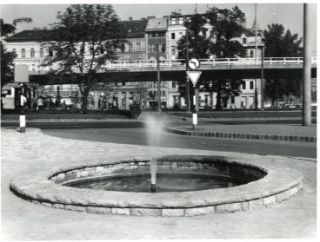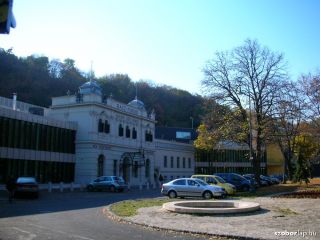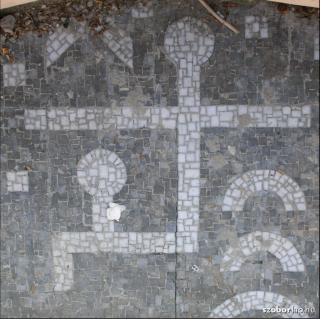ALBERT Ádám: My Appropriations (Dezső Korniss), 2022
6 equal-sized enamel panels: each 21 x 21 cm, mounted on hollow structural section
overall dimensions: 47 x 73.5 cm
The motifs highlighted by the artist are from the mosaic (1967) covering the bottom of the Esperanto Fountain located in front of the Rác Thermal Baths, in the Tabán area of the First District. The black and white photographs showing Dezső Korniss’s (1908–1984) work (KEMKI ADK Inv. No.: 25001/2014/Korniss Dezső/1-3) belong to the public sculpture register, which comprises part of the 500 metres of documents that originally belonged to the Lectorate of Fine and Applied Arts, but have, since 2014, been kept at ADK’s predecessor, the Data Archives of the Hungarian National Gallery.
The mosaic of the Esperanto Fountain is, on the one hand, an early and qualitative example of making the most (often thanks to professional solidarity) of the limited possibilities afforded by the institutional system of the era within a framework of multi-round commissions. At the same time, as a result of the era’s continuous “transformation” and destruction of the architectural structures, it is becoming increasingly singular within Korniss’s oeuvre: alongside the sgrafitto (Rhythm, 1958) in Dereglye Street (Third District), it seems to be the only piece of public art by Korniss that can still be found today, albeit in a rather dilapidated and ruined—but nonetheless still salvageable—state.
Thus, Albert’s work highlighting and presenting six motifs—or fragments—is as much an expression of urban archaeology as it is an awareness-raising gesture. The focal elements of this transliteration across the genres consist of enlarged characters from Korniss’s (increasingly illegible) set of signs, combining letters and human forms. The mosaic cube-shaped displays retain the original black and white colour scheme.





